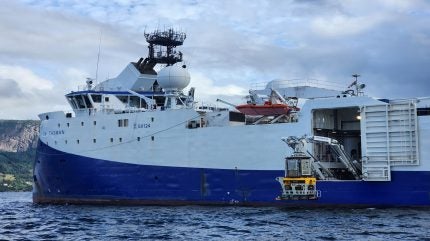
Shearwater Geoservices, a specialist in offshore data collection, has been awarded its second ocean-bottom node (OBN) survey project by TotalEnergies in Angola.
The three-month deepwater survey will focus on the Golfinho and Cameia fields, utilising Shearwater’s Pearl node technology.
Shearwater will deploy its SW Tasman vessel, specifically designed for seismic node-laying and equipped with dual remotely operated vehicles (ROVs).
The SW Tasman was converted in 2023 to enhance its capabilities for such surveys.
The SW Gallien will serve as the source vessel for the project, which is a direct continuation of a previously announced assignment.
The initial OBN contract with TotalEnergies was granted to Shearwater Geoservices in October 2024, with the deep-water survey scheduled to begin in January 2025.
Expected to last around two and a half months, the survey will take place in Block 32 at the Louro and Mostarda fields.
This area is familiar to Shearwater, which previously completed a 4D streamer survey for TotalEnergies there.
Shearwater CEO Irene Waage Basili stated: “These consecutive projects underline the strength of our long-term strategy and add to the already impressive utilisation of the Shearwater OBN platform.”
In March 2024, Shearwater GeoServices secured a contract for a seismic survey from Spirit Energy.
The project, part of the Morecambe Bay carbon capture and storage initiative in the UK, spanned 500km² over the Morecambe Bay gas fields.
The fields are planned to be transformed into safe, permanent, and secure carbon storage, to capture and store more than 50 million tonnes per annum (Mtpa) of CO₂ by 2035 and support the UK’s net zero goals.



